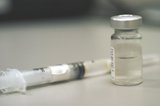
|
 |
University of Pittsburgh receives $1.3 million grant for developing a promising avian flu vaccine
Aug 29, 2006 - 3:17:00 AM, Reviewed by: Dr. Priya Saxena
|
|
"It will take us a few weeks to get our facility ready. However, we hope to begin vaccine production by early fall."
|
By University of Pittsburgh Medical Center ,
 |
| Because this vaccine contains a live virus, the Pitt investigators believe it may be more effective in stimulating a therapeutic immune response than avian flu vaccines prepared by traditional methods. |
The National Institute of Allergy and Infectious Diseases (NIAID), of the National Institutes of Health in Bethesda, Md., has awarded a $1.3 million, two-year grant to the University of Pittsburgh School of Medicine to produce a promising avian flu vaccine that could be used in Phase I and Phase II human clinical trials.
In January of this year, Pitt researchers reported in the journal Virology that their vaccine, which contains critical components of the deadly H5N1 virus but does not cause disease, completely protected mice and chickens from infection after exposure to the wild-type virus.
According to Andrea Gambotto, M.D., assistant professor in the departments of surgery and molecular genetics and biochemistry, University of Pittsburgh School of Medicine, and lead investigator on the project, the funding will allow his group to begin immediate scale-up of vaccine production.
"It will take us a few weeks to get our facility ready. However, we hope to begin vaccine production by early fall," he said.
Dr. Gambotto and his co-workers created their vaccine by genetically engineering a common cold virus, called adenovirus, to express either all or parts of an avian influenza protein called hemagglutinin (HA) on its surface. Found on the surface of all influenza viruses, HA allows the virus to attach to and infect a cell, a critical step in the influenza virus' ability to cause illness and death.
Because this vaccine contains a live virus, the Pitt investigators believe it may be more effective in stimulating a therapeutic immune response than avian flu vaccines prepared by traditional methods. Indeed, traditionally developed flu vaccines in which the virus is grown in fertilized chicken eggs and then killed by heat or chemicals, take a minimum of four to six months to make and typically produce an immune response against only one strain of the virus. Since there is evidence that H5N1 is beginning to mutate, more traditional vaccines may have limited effectiveness in a pandemic outbreak.
Because the Pitt vaccine is grown in cells, it can be produced much more quickly, making it an extremely attractive candidate for preventing the spread of the virus in both domestic livestock populations and in humans. There also is evidence from other studies that such vaccines can protect against more than one strain of the virus. Since their initial report, Dr. Gambotto's team has refined the vaccine by adding more H5N1 immune-stimulating proteins, which they believe will make it even more effective against different strains of the virus.
Dr. Gambotto is hopeful that NIAID will be interested in comparing the effectiveness of his vaccine to that of two other vaccines that already have been tested in federally funded clinical trials. Those vaccines, produced by GlaxoSmithKline and Sanofi Pasteur, stimulated what is considered an adequate immune response in only one-half to three-quarters of healthy people who were inoculated.
"Testing our vaccine in the same protocol as the previous two is the only way to tell if ours is as good, better or worse," explained Dr. Gambotto.
To date, H5N1 has caused the most large-scale and widespread bird deaths in known history--an estimated 150 million to 200 million birds have either died in the outbreaks or been killed as part of infection control actions in the last eight years. The H5N1 virus does not usually infect humans. However, in 1997, the first case of spread from a bird to a human occurred in Hong Kong during an outbreak of bird flu in poultry. The virus caused severe respiratory illness in 18 people, six of whom died. Since that time, there have been 241 known human cases of infection with H5N1, and 141 of those have died, according to the World Health Organization. 
-
The University of Pittsburgh School of Medicine is considered among the nation's leading medical schools, renowned for its curriculum that emphasizes both the science and humanity of medicine and its remarkable growth in National Institutes of Health (NIH) grant support, which has more than doubled since 1998. For fiscal year 2005, it ranked eighth among schools of medicine and, together with the university and hospital affiliates, ranked seventh among educational institutions, according to preliminary data. As one of the university's six Schools of the Health Sciences, the School of Medicine is an academic partner to the University of Pittsburgh Medical Center. Their combined mission is to train tomorrow's health care specialists and biomedical scientists, engage in groundbreaking research that will advance understanding of the causes and treatments of disease and participate in the delivery of outstanding patient care.
|
For any corrections of factual information, to contact the editors or to send
any medical news or health news press releases, use
feedback form
Top of Page
|
|
|
|